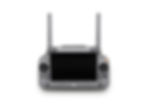The DJI M400 RTK: A Next-Level Upgrade That Changes Everything
- Dave Scott
- Jul 22
- 4 min read
Drones have dramatically transformed industries like agriculture, developments, surveying and construction. With its latest innovation, the DJI M400 RTK, DJI is taking a leap forward. This drone, a successor to the M350, enhances aerial surveying and mapping efficiency. It also introduces numerous upgrades that promise to overhaul workflow processes. In this post, we will explore the key features of the DJI M400 RTK, highlight its various upgrades over the M350, and share compelling examples along the way.

Exploring the Upgrades of the DJI M400 RTK
At the core of the DJI M400 RTK is advanced technology that boosts efficiency and reliability for professionals across various fields.
Enhanced Flight Performance
One striking feature of the M400 RTK is its impressive flight performance. The drone offers a maximum flight time of up to 59 minutes, surpassing the M350 by about 19 minutes. This extended flight time means fewer battery changes during missions, which is essential when mapping vast areas (but remember this is the advertised flight time, reality will always be less).
For example, in land surveying projects, this efficiency allows teams to cover large plots without interruption. The extended operational time results in a more comprehensive data collection, which is vital for not only accuracy but also project efficiency.

Robust Payload Capacity
The DJI M400 RTK boasts a 6 kg payload capacity, enabling it to carry multiple sensors simultaneously. This flexibility opens the door to various applications.

Smart Obstacle Avoidance System
Safety is a significant concern when operating drones, especially in complex environments. The M400 RTK raises the safety standard with its 6-directional obstacle avoidance system. This feature dramatically improves navigation and situational awareness, reducing the risk of collisions.
By utilizing advanced sensors, the M400 RTK can detect obstacles in real-time. Operators can concentrate on data collection, knowing the drone is equipped to avoid potential crashes. While the M350 does have sensors, it cannot match the sophisticated coverage provided by the M400 RTK.

Advanced Data Transmission Capabilities
The M400 RTK features innovative data transmission technology that supports an extensive video transmission range. With this capability, users can stream high-quality video in real-time—crucial for missions needing immediate situational analysis or decision-making.
The onboard AI also improves data processing, enabling real-time data analysis and reducing downtime. Compared to the M350, the M400 RTK's data transmission features represent a significant advancement, ensuring data is both accurate and timely.
Practical Applications: Case Studies in Action
To appreciate the true potential of the M400 RTK and its upgrades, consider these practical case studies demonstrating the drone's capabilities.
Case Study 1: Environmental Monitoring
Imagine a team assigned to monitor a coastal ecosystem. Accurate data on vegetation coverage, water temperature, and wildlife activity is essential for their comprehensive report. Here, the DJI M400 RTK proves invaluable.
Thanks to its extended flight time, the team covers large sections of coastline without interruption. By carrying a multi-sensor payload, they gather diverse data simultaneously. Furthermore, the obstacle avoidance system allows them to manoeuvre around natural features, ensuring safety while collecting crucial data for their environmental studies.
Case Study 2: Infrastructure Inspections
In a second case, a construction project faced tight deadlines and hazardous conditions. Here, the M400 RTK played a key role in inspecting complex steel structures, providing high-resolution imagery through various payload options.
The drone's advanced data transmission capabilities meant engineers received live feeds of critical structural conditions. This immediacy allowed for quick resolutions to concerns raised during inspections. Additionally, the M400 RTK's robust design ensured it could operate effectively in unfavourable weather, making it a dependable partner for infrastructure assessments.
Comparing the M350 and M400 RTK: A Milestone in Innovation
With its extensive upgrades, the DJI M400 RTK establishes a new benchmark in the drone market. Here's a summary of the key points of comparison between the two models.
Flight Performance and Efficiency
M350: Offers up to 40 minutes of flight time, which may be limited for extensive surveys and data collection.
M400 RTK: Provides up to 59 minutes of flight time, allowing for longer missions and increased data accuracy.
Payload Capacity and Compatibility
M350: Has a lower payload capacity of 5 kg, requiring specialized equipment setups.
M400 RTK: Supports a higher payload of 6 kg, making it versatile for multiple sensor configurations and tasks.
Safety and Navigation
M350: Features basic obstacle detection, providing limited safety measures in complex environments.
M400 RTK: Includes an advanced 6-directional obstacle avoidance system, significantly enhancing operational safety.
Data Handling and Transmission
M350: Limited video transmission capacity and struggles with effective real-time data analysis.
M400 RTK: Supports extensive data transmission and real-time analysis, crucial for immediate decision-making.
The Importance of Upgrades in Drone Technology
As we move through 2025 and beyond, advancements like those in the DJI M400 RTK are essential for pushing the limits of aerial applications. The upgrades not only demonstrate technological progress but also a deeper understanding of the needs and challenges faced by users.
The ability of drones to operate seamlessly under various conditions—prioritizing safety, reliability, and efficiency—allows industries to tackle projects once seen as too challenging or risky. This shift leads to innovative solutions and significant time and resource savings for many professionals.
Embracing the Future of Drone Technology
The DJI M400 RTK exemplifies the significant technological strides made in the drone sector. With its numerous upgrades from the M350, it sets a new standard for performance, safety, and efficiency in aerial operations.
By adopting this cutting-edge technology, professionals across various industries can streamline their workflows and achieve remarkable results. Whether it’s environmental monitoring, infrastructure inspections, or public safety operations, the DJI M400 RTK stands as a powerful ally that indeed changes everything in drone technology.
For those looking to explore the incredible possibilities this drone offers, the future appears bright. With capabilities customized to meet complex demands, the M400 RTK is an indispensable tool for the years ahead.

